
(The Washington Post) — Genet Lire locked herself in a bathroom stall at Dulles International Airport and hid. The clock was ticking. If she was found, she would have to get on the plane and eventually return home. She feared she surely would be locked up again, probably beaten, and her family terrorized.
The time passed slowly: five minutes, 10, 15, 20. Feet tapped on the tile floor. Doors opened and closed. Every noise and shuffle made Lire’s chest tighten.
This was supposed to be a quick layover. Lire was a 17-year-old sprinter from Ethiopia, here to compete in the junior world championships in Eugene, Ore. But she had no intention of ever reaching the starting line. She and her teammates flew in from Addis Ababa. They rushed to their gate, watched their bags board the big jet, and that’s when Lire saw her chance, slipping away to the bathroom as the flight began to board.

She didn’t know it at the time, but not far from Dulles, in and around the Washington area, there was an entire community of Ethiopian runners in similar situations. They were beaten and persecuted back home, almost all of them for political reasons. They feared for their lives and sought asylum in the United States, most putting their promising running careers on hold for the chance at stable and safe lives.
About three dozen Ethiopian runners have congregated in the Washington area, many in just the past three years, and 12 agreed to share their stories with The Post. Some requested their full names not be used, fearful that their families in Ethiopia would face retribution. The details vary, but some threads are consistent: They all had been imprisoned but never charged with crimes; most used visas they’d received through their track careers to flee; they were all beaten to some degree; and many have struggled to acclimate to a new life, far from family and lacking the time and resources to continue running competitively.

“They get here and they are physically and emotionally traumatized,” said Kate Sugarman, a Washington physician who has treated many of the runners. “Some of them can’t even run because of the injuries they suffered during their beatings. I think they’ve lost their confidence and arrive here without a lot of hope.”
The runners have varying skill levels, but most are long-distance specialists, having competed in marathons from New York to China. They’ve won big races in Europe and North America and claimed titles across Africa. One man in his mid-20s once completed a marathon in 2 hours 8 minutes. Only two American-born distance runners have ever run faster.

Lire was a rising star back in Ethiopia, a promising sprinter in a nation of distance runners. Less than a month earlier, she had won the national title in the 400 meters, setting an Ethiopian record. A strong showing at the junior world championships last July would’ve been an important stepping stone to representing Ethiopia in the 2016 Olympics.
Instead she sat in the Dulles bathroom, half-scared she would be spotted and half-scared she wouldn’t. All she had were the clothes on her back and a red Adidas backpack. Inside were photos of her family, friends and the life she was escaping. Lire felt she had no choice. She had spent several weeks discussing the trip to America at length with her family, and they all urged her to flee at the first opportunity.
After 30 minutes, Lire cautiously opened the bathroom door. The plane was gone, with her teammates and coaches aboard. She looked around and approached a man with a friendly face.

In her native Amharic, she said, “Please help me.”
‘You’ll never go anywhere’
In Addis Ababa, Haile Mengasha refused to join the nation’s ruling political coalition — the Ethiopian People’s Revolutionary Democratic Front (EPRDF) — and said he was detained for a week in 2012. His interrogators repeatedly struck him in the head and held a flame to his feet. It took 11/2 years to raise enough money, but he finally was able to fly to the United States for a half-marathon with no intentions of returning home. The 25-year-old now works in a Washington liquor store and runs when his aching back allows. Mengasha said many days are “dark” and his future uncertain, but that it beats the alternative.
“I’d rather commit suicide in America than return to Ethiopia,” he said.

Others share similar stories. Authorities accused them of spreading propaganda or conspiring against the EPRDF. Most of the runners now living in Washington say they were never politically active back in Ethiopia. They simply refused to join the EPRDF. In some cases, their biggest offense was having relatives who refused to join.
“I told them I don’t support any other government. I just wanted to live by myself,” said one runner who was imprisoned for a week in 2010. “I didn’t have any politics.”
Once detained, most were beaten for days on end. For Tesfaye Dube, it was 10.
“They were coming every single day, beating me, saying, ‘We know what you are doing. You are sabotaging, you’re helping the opposition parties. You have to stop doing that or we’ll kill you,’” Dube recalled.

For Taddase Hailu, it was seven.
“In the morning, they’d come to take me to a dark place to beat me,” he said. “I’m never sure I’d live the next day.”
Hailu suffered a stab wound in his lower back, was beaten with a baton and kicked with heavy boots. Worst of all, they targeted his back and Achilles’, which two years later still prevents him from running at peak form.
“They told me, ‘If you can’t run, you’ll never go anywhere,’ ” he said.
Most detainments lasted only a few days or weeks. There were never criminal charges, no due process, attorneys or visitors. Often families were unaware their loved ones had even been imprisoned at all.
Many of the Ethiopian runners belong to the Oromo ethnic group, which accounts for more than one-third of the country’s population, according to the most recent census, making it by far the most populous ethnic group. “Oromo is no good to them,” explained one runner, who was detained three times but never faced charges.

Oromos hold few positions of power in Ethiopia, and the EPRDF has governed the nation for more than two decades. In May, Ethiopia held its most recent national election, and the EPRDF and its allies swept every one of the 547 parliamentary seats.
“Most of the stories you hear now out of Ethiopia are about this sort of economic growth and development happening,” said Felix Horne, a researcher with the Human Rights Watch, the international watchdog and advocacy group. “But there are real stories about people who aren’t part of that success, who question the government and suffer pain and torture because of it.”
A new, and different, home
Lire left the airport with a sympathetic man, who happened to be from Botswana, and began trying to navigate her new life. She was quickly connected with some fellow Ethiopians, nonprofit organizations and a church that offered help.

For Lire, Washington was nothing like her home, a rural farming community outside a city called Hosaena where her father grew rice and beans. He was part of an opposition party called the Southern Ethiopia Peoples’ Democratic Coalition and faced overt pressure and persecution for years.
Lire remembers one of the first times authorities came for her father. She was just 8, and the entire family was fleeing their home on foot. She sprinted, trying to keep up with her father, and remembers a sudden burst of pain shooting through her body. A spear barely missed her father but struck Lire in the right arm, where a decade later she still bears a scar the size of a tennis ball. She tumbled and became entangled in barbed wire, the metal spikes tearing into her scalp. Her father was carrying Lire’s 3-month-old brother when he tripped and fell. The baby was crushed and died. Lire’s father was taken into custody. He was released after one week but detained many more times in the ensuing years.

That was around the time Lire started running. Always barefoot, she sprinted everywhere — to school, for chores, around the fields near her home. She won early races wearing flats and a dress and began catching the eyes of local running clubs.
Her running career began garnering attention, and last June, despite being younger than others in the starting blocks, Lire set a national record, running the 400 meters in 51.44 seconds. Her track career was taking off just as she was approaching voting age in Ethiopia. Because she would turn 18 before the national election, she’d been feeling pressure for several months to join the EPRDF. Just like her father, she refused.
“The party is not for the people,” she said.

She and her family decided that she’d flee Ethiopia at the first opportunity. She won $250 in prize money last May competing at the African Youth Games in Botswana, and she spent half of it on a camera, intent on capturing every facet of her life in Ethiopia. “My history,” she calls it.
Lire didn’t have much time. Last June, just two weeks before the junior world championships in Oregon, she was detained. She recalls a small room, packed with too many people to count — too crowded for everyone to lie down at the same time. Even as plain-clothes security officers made threats about her running career, she knew she was given preferential treatment because of her potential. She was allowed to train in the mornings but was locked up each night, never certain what the next day held, when she’d see her family again or whether she’d be allowed to compete.

Lire made no promises and refused to pledge loyalty to any political party. After 10 days, she was finally released. Three days later, she said goodbye to her family, stuffed her photo album in the red backpack and boarded a plane for the United States.
‘Still happening in my mind’
The transition is never easy. Arriving in the United States might mitigate some fears, but many other issues quickly surface: a complicated legal system, housing, employment, separation from loved ones. It’s no wonder some runners say they dream of being back home.
“My heart is still always with my family,” said Hussen Betusa, 37, who left his wife in Ethiopia after authorities there detained him for 15 days in 2012. “I’d love to go back, but I cannot. They’d kill me.”

The transplanted Ethiopian runners abscond to the United States for safety more than opportunity. When they arrive, many struggle to assimilate, often navigating a legal maze to seek asylum as they desperately search for day-to-day normalcy.
EB is one of several runners who’s fearful his family will face retribution if he revealed his full name. The 35-year-old was an accomplished runner who raced in the United States, Europe, plus all over Africa. He’d posted impressive wins over competitive fields and cracked 2:15 on his best marathon days. In 2013, EB had just finished a training run in Addis Ababa when he was stopped and beaten on the street. He went to a police station to file a complaint and that’s when he was arrested. He was detained for 10 days — hitting, slapping, yelling.
“The memories — it’s still happening in my mind,” he said.
EB was released and felt he had no choice: He had to leave Addis Ababa as quickly as possible. “If I stay there, maybe I don’t live much longer,” he said.
So he moved to the United States in the summer of 2013 and slowly started adjusting to his new life. He even entered — and won — an East Coast marathon later that year.
But EB felt like he was living in two places: his body in Washington, his heart and mind some 7,100 miles away. He received reports from back home that authorities were looking for him and were regularly harassing his family. They’d visit his younger sister at school, asking, Where is your brother? Are you talking to him? What is he doing?

In early 2014, he learned that his younger sister had hanged herself, and he blamed the political tormenters for her death. He also blamed himself. “If I was just man enough to face that,” he said, “my sister would still be alive. It was because of me being here.”
He stopped running. He stopped doing much of anything. EB felt hopeless and spent his days contemplating suicide.
EB met with psychologist Sheetal Patel, who specializes in working with torture survivors. He was barely a shadow then. Patel saw a man who wasn’t living and a runner who wasn’t running.
“There were just so many barriers,” Patel said. “He’d said he couldn’t do it. He couldn’t run. He could barely breathe.”
While the trauma is very real and still very present, Patel said some of EB’s wounds were somatic — his quiet voice became almost muted, the words unable to pass through his throat. Slowly, Patel and the physician Sugarman worked with him, encouraging him to talk, to open up, to lace up his running shoes. Sugarman invited him in January to join her running group for a five-kilometer fun run. And then he did 10k, followed by a half-marathon.

It’s a slow, difficult process, EB said. He learned long ago something every good marathon runner must accept: there are points along the course where the pain seems unbearable, where every step feels like it’s surely the last. A marathon is about surviving, enduring agony and somehow finding the strength to keep putting one foot in front of the other.
“Even if there’s pain, you learn to keep going,” EB said.
Saying goodbye to family is perhaps the toughest part for the Ethiopians runners. Many were married back home, some had children. One runner, a 31-year-old marathoner, for example, left behind a wife and 16-month-old son.
“I get here, and everything is different. It’s not like what I wished in my mind,” he said. “I thought it’d change my life. It’s not happening. The opportunity is not like that.”

The distance from his family resulted in depression. He struggled finding work and steady housing. Like many of the runners, he found some assistance from a nonprofit called Torture Abolition and Survivors Support Coalition (TASSC), which provides transitional housing, legal assistance, health services, counseling and job placement. The organization serves over 300 survivors annually, about 80 percent of whom are Ethiopian.
“Some people are literally coming to us straight from the shelter or from the street,” said Gizachew Emiru, TASSC’s executive director. “When they come, most of them come with just the clothes they’re wearing. So when they get here, they’re desperate for everything.”
Even after filing for asylum, a person must wait 150 days before applying for employment in the United States. That amounts to five months of scrounging for food, shelter and under-the-table work. The 31-year-old runner, who had competed in Poland, Germany, Austria and Greece, arrived here in 2010 and cleaned houses and worked in hotels.
His asylum was eventually granted, he was permitted to work legally and after three years apart, his family was allowed to join him in the United States. He’s now a line cook at a Marriott hotel and runs nearly six miles to and from his job each day. That 16-month-old baby is now 5 years old and last month attended his first day of kindergarten.
The path ahead
On a recent warm summer morning, Lire, EB and several other Ethiopian runners gathered in Northwest Washington for a short training session behind Coolidge High School. The Black Lion Athletics Club meets several times a week. Founded by Alan Parra, a local immigration attorney who has represented several of the runners, it operates on a shoestring budget and has become a refuge and meeting place for many of the transplanted Ethiopians.
Their coach stood inside the track with a stopwatch and after just a couple of laps, most of the seasoned runners broke into a sweat. As the others slowed, EB kept moving around the track, his gait smooth, graceful and long. He seemed to be smiling, too, looking every bit like a man who could run forever.
He still speaks just a half-notch above a whisper and is still worried about the harassment his family faces back home. But he’s running again and even has plans to compete in a marathon next spring, which would be his first in more than two years.
“Now I am doing okay,” he said.
Her hair tied in a ponytail, Lire was bent at the waist with hands on her knees as she looked down on her shadow and caught her breath. The sweat made the scar on her arm glisten under the sun.
She is now 18 and still adjusting to her new life. Those early days were difficult. Lire bounced among Ethiopian families and even spent a couple of nights sleeping outdoors. She recently had to leave a room she was renting because she couldn’t afford the $400 monthly fee. She’s now temporarily living with Parra, who’s handling her case, sleeping on a pullout sofa in his one-bedroom apartment.
Lire filed for asylum six months ago and is still waiting for a response. The process can take months, sometimes more than a year. Since 2010 the United States has granted asylum status to at least 8,500 immigrants each year, according to the U.S. Department of Justice. An average of 388 asylum cases were granted from Ethiopia each year, second only to China.
Lire is slowly piecing together her new life. She’s much younger than many of the other relocated torture survivors, so she has few friends here. She misses her family and tears up flipping through her photo album, her “history.” Lire is learning English by watching YouTube videos and listening to Christian radio. Back in Ethiopia, she’d finished the equivalent of the 10th grade, and Parra is trying to place her in school here. He hopes she might soon be able to run track in college, and beyond that, who knows?
“My goal is Olympics,” she said.
Many of the Ethiopian runners circling the Coolidge track have a similar dream — if not Lire’s talent and potential — but no country to represent. The International Association of Athletics Federation, the governing body for track and field, requires athletes to be citizens of a country in order to represent it in competition. If the athlete changes citizenship, there’s typically a one-year waiting period. The runners who’ve been granted asylum fall into a gray area and must wait for five years before they can apply for U.S. citizenship, a lifetime for an elite athlete.
For now, Lire continues training, her immediate and long-term future equally uncertain. She said she’s both grateful and sad to be here. She tries to chat on the telephone with her family once every couple of weeks but doesn’t know when — or if — she’ll see them again. For now, Lire figures, the best she can do is honor their wishes and keep running as fast as she can.
 Impaayera Itoophiyaa keessatti imaammata dabaa murni wayyaanee hordofaa jiru irraa kan kahe hoongee fi gogiinsi uumame lubbuu lammiilee fi beeyladaa balaa ulfaataaf saaxilaa jira. Keessumaa ammoo dacheen Oromiyaa jiidhinaa fi badhaadhinaan beekkamtu imaammatuma gartuu abbaa irree kanaatiin ontee fi gogdee lammiileen kumootaan nyaata dhabuun leeccalloo isaaniis hurgufatanii hiraara argaa jiru. Mootummaan wayyaanee wayta rakkoon kun uumamu ummata nan bulcha jedhuuf birmatee nyaataan dhaqqabuu fi hegereefis akka rakkinichi hin uumamneef hojjechuu mannaa, inumayyuu hammeessaa jiraachuu gabaasaaleen godinaalee Oromiyaa adda addaarraa nu dhaqqaban ni ibsu.
Impaayera Itoophiyaa keessatti imaammata dabaa murni wayyaanee hordofaa jiru irraa kan kahe hoongee fi gogiinsi uumame lubbuu lammiilee fi beeyladaa balaa ulfaataaf saaxilaa jira. Keessumaa ammoo dacheen Oromiyaa jiidhinaa fi badhaadhinaan beekkamtu imaammatuma gartuu abbaa irree kanaatiin ontee fi gogdee lammiileen kumootaan nyaata dhabuun leeccalloo isaaniis hurgufatanii hiraara argaa jiru. Mootummaan wayyaanee wayta rakkoon kun uumamu ummata nan bulcha jedhuuf birmatee nyaataan dhaqqabuu fi hegereefis akka rakkinichi hin uumamneef hojjechuu mannaa, inumayyuu hammeessaa jiraachuu gabaasaaleen godinaalee Oromiyaa adda addaarraa nu dhaqqaban ni ibsu.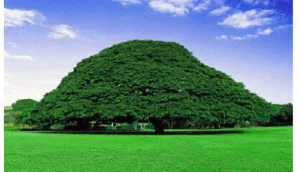


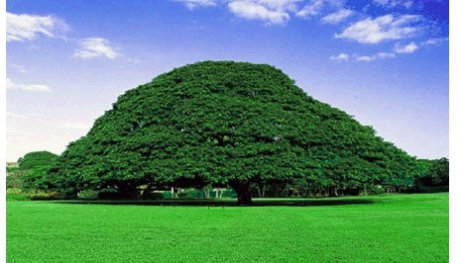






















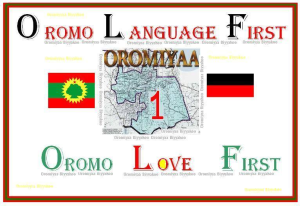
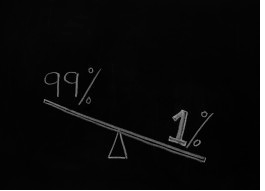















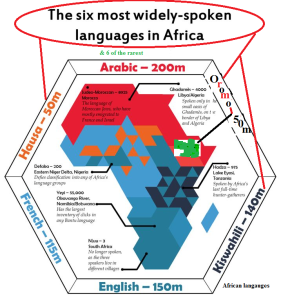



















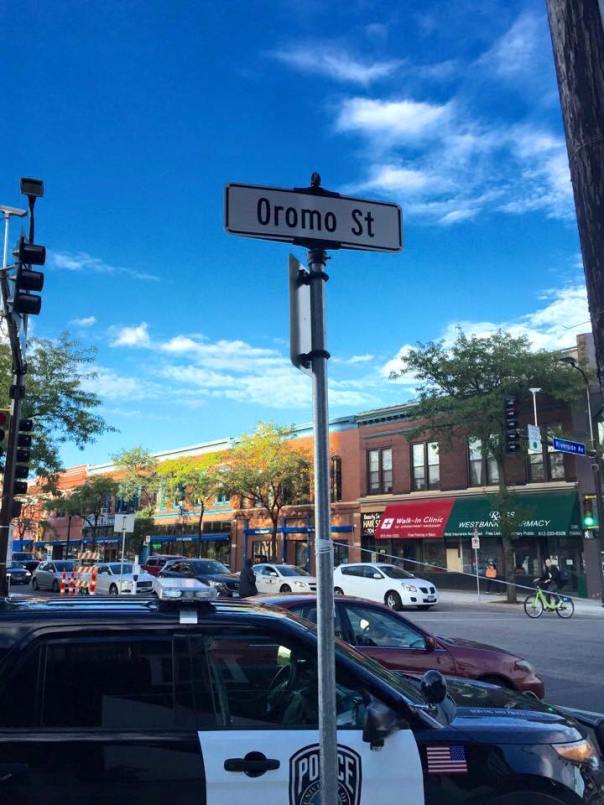

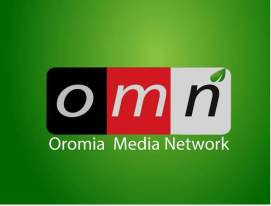
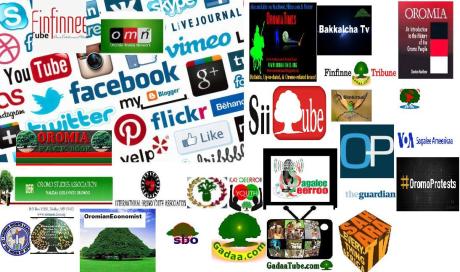






















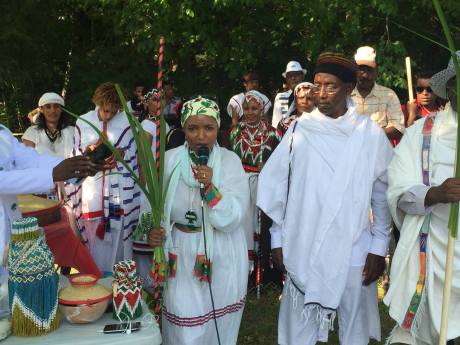


“The same is going on right now in Ethiopia. Authorities are either hiding the presence of famine or stealing the food aid.”
He included the below link to an article written about the current drought which I suggest you read. https://oromianeconomist.wordpress.com/2015/08/27/the-cause-of-ethiopias-recurrent-famine-is-not-drought-it-is-authoritarianism/ My comments follow below.
Leaves in a Dry Wind